Report #11: XN745 - A ride on the elusive Do-328
This will be my report on flying on Xpressair economy class from Bandar Lampung TKG to Palembang PLM, a short-haul intercity route within Sumatera island.
This is the second part of the 2 reports for this trip. For the first report covering Garuda Indonesia from CGK to TKG, read here.
Background
Express Air (dba Xpressair) ran the BDO - TKG - PLM - PKU - either TNJ - MWK or MKZ loop route 6 times a week. As I was based in Jakarta, BDO - TKG was initially thought as the clear winner. Unfortunately, due to the destination being way too close to Jakarta (plus getting to Bandung the night before would be a nightmare), I decided to take the trip slightly further and chose the TKG - PLM flight.
One of the charms of the flight is that the flight was operated by Dornier 328, a very rare plane compared with ATR series planes, flown by Wings Air (more reasonably priced) and Garuda Indonesia under Explore brand (obscenely priced) in Indonesia. Susi Air may operate even smaller planes, but Express Air is different as it does not serve remote areas.
Therefore, following is the itinerary:
Jakarta - CGK: Car
CGK - TKG: Plane (previous part, read here)
TKG - PLM: Plane (you are here)
Palembang - Bandar Lampung: Intercity train (you are here)
Bandar Lampung - Jakarta: Ship (previous part)
Fun fact first: Asian Games 2018 would be held in Jakarta as well as Palembang, both of which were separated more than 400 km away.
Trip to TKG and check-in
Technically my trip to TKG was the one on GA earlier, so there would be no review on how I went to the airport.
After I wandered around the landside, 2 hours before departure I proceeded back to the check-in hall.


XN had two check-in counters, which should be more than enough for up to 32 passengers for the flight.
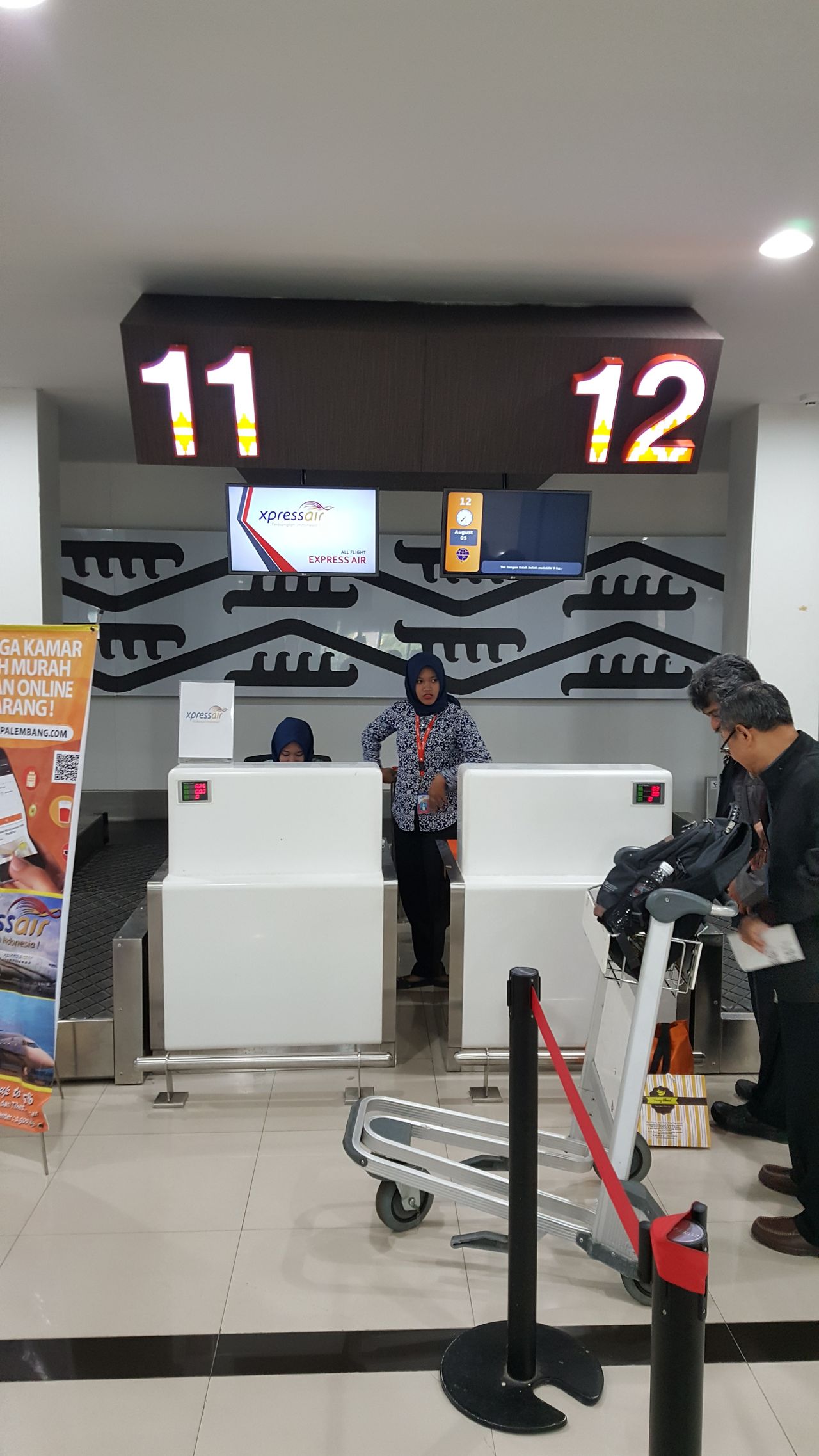
As it is a small airline, they even still used hand-written luggage tag.

Dornier 328 uses a 1-2 seating configuration, so as a single traveler and since web check-in was unavailable I requested at the counter for the single seat. Soon, I was given my boarding pass which resembled a receipt, but for an airline that didn't even have proper luggage tag this was still better than handwritten boarding pass.

The signage looked much cheaper than what you would usually find at larger airports. As this airport is managed by the Ministry of Transport, expect even more of its logo.

Escalator to the gate and the unused signage to the immigration counter as TKG only serves domestic flights at this moment.


Airside security was also fast especially as there were few planes for the next hour or so and I reached the airside in a couple of minutes.
TKG transit area and departure
Weather data from Indonesia's meteorology agency (the airport is managed by a ministry, which explains a lot).

A tribute to Radin Inten II, a national hero from Lampung and the person the airport is named after.
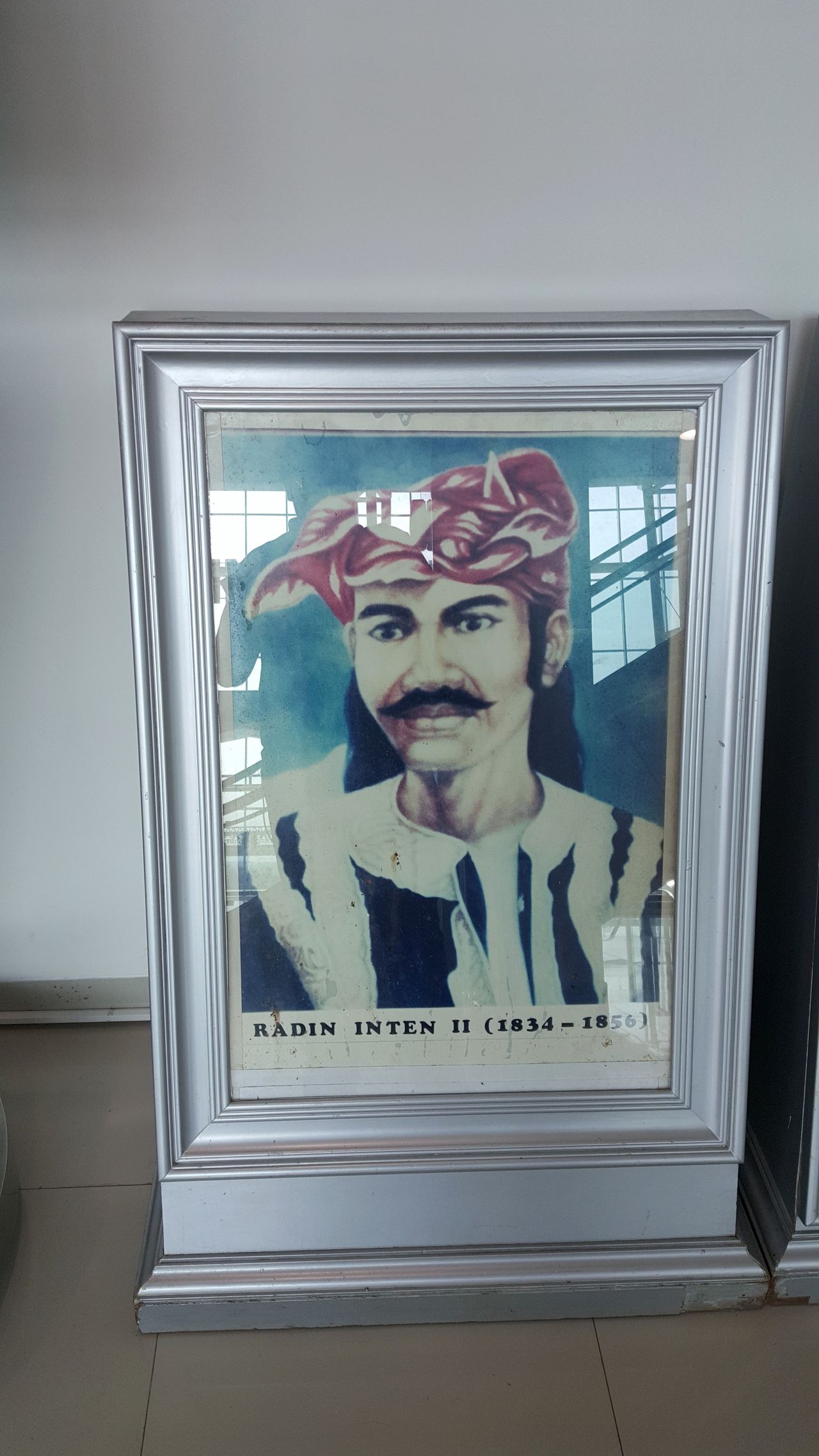

Lounges are located upstairs, but I did not get to visit any as I had no free access to those lounges. Notice the 4 logos of Indonesia's ministry of Transport in the picture alone.

The waiting area is typical to what you would find on a mid-sized airport.

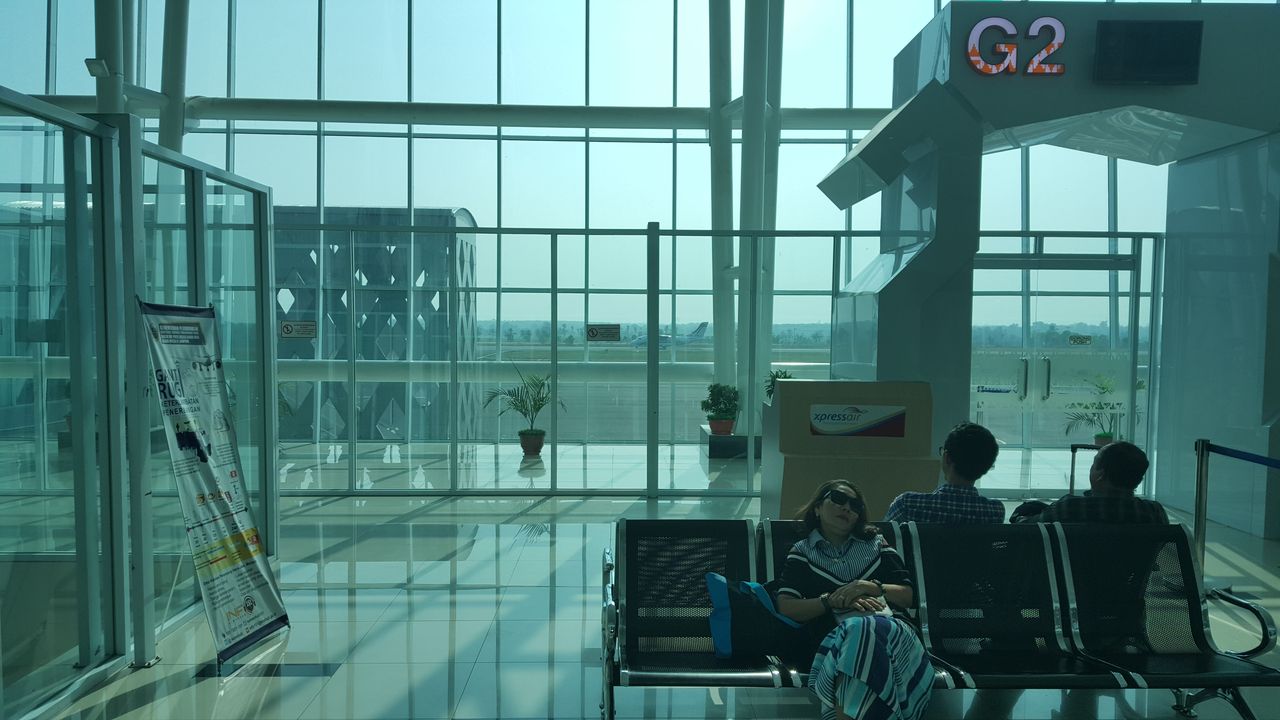
Only one desk was provided for XN, although it should be enough.

The waiting room was dedicated only for XN at that moment, so it was quite quiet.

Boarding soon started.

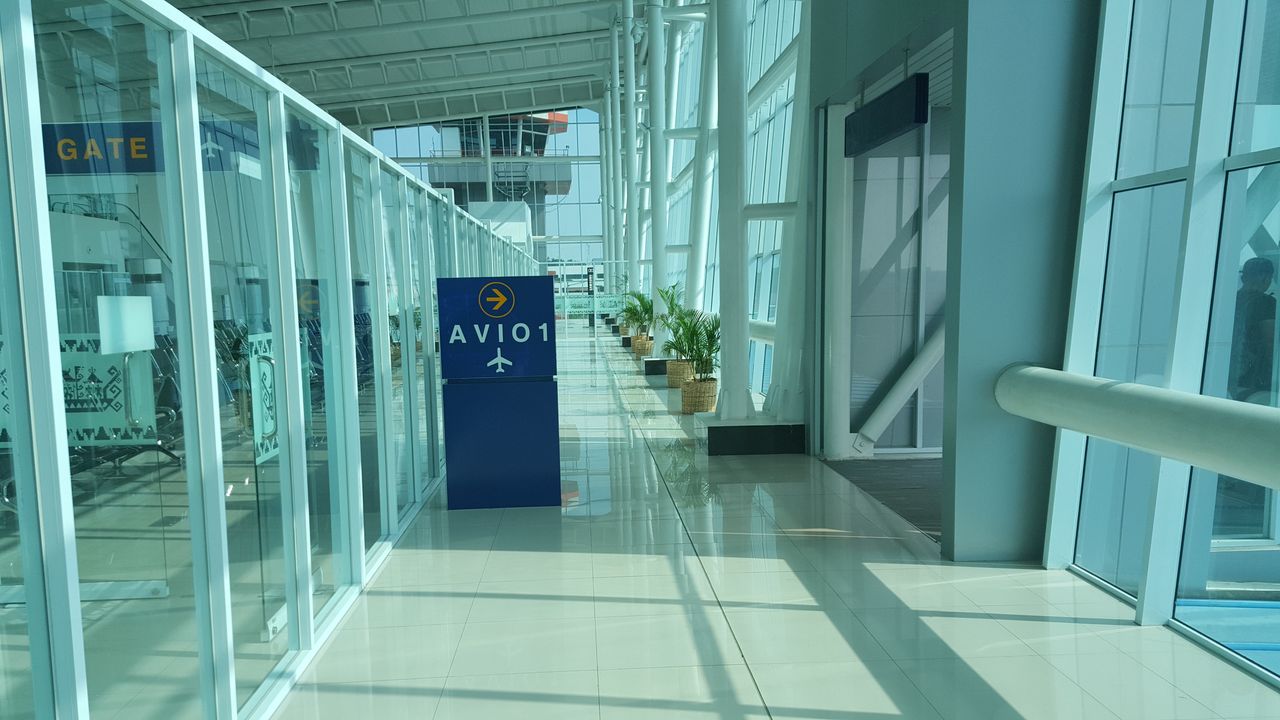
We then went down the staircase and walked to the plane.

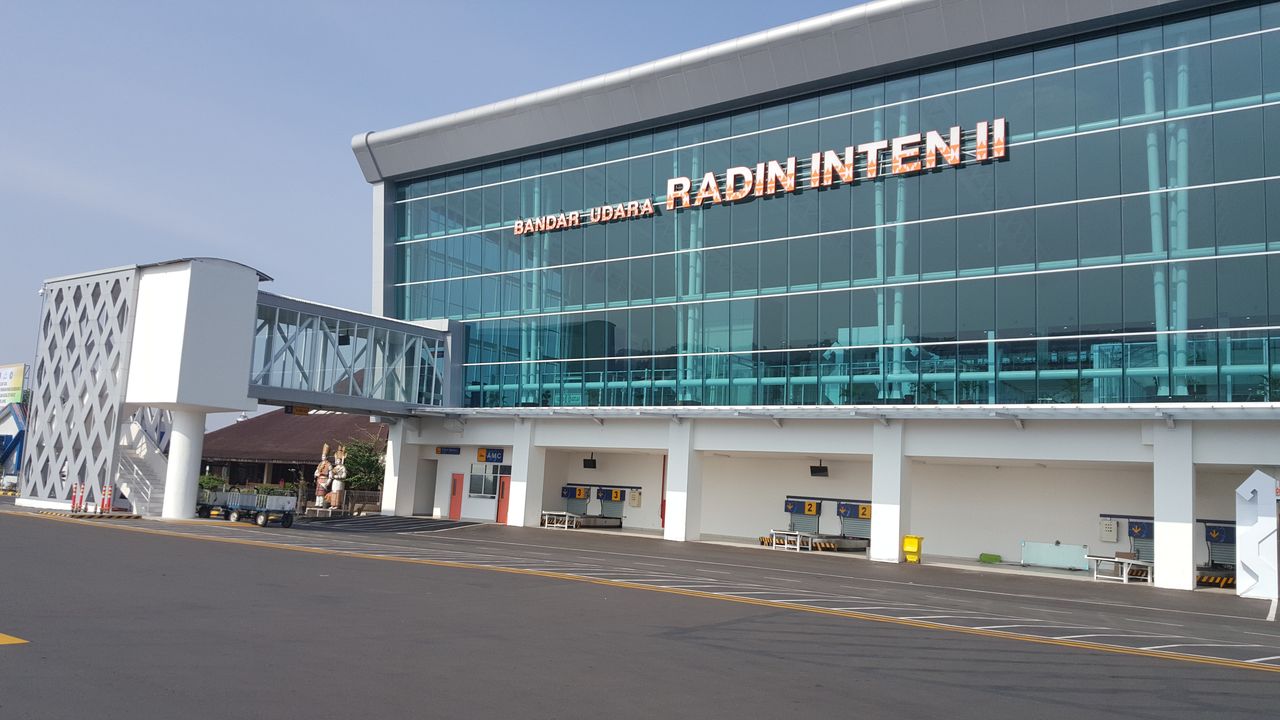
Dornier 328 is much smaller than Wings Air's ATR72 beside, which I got to sample with Malindo Air (a Lion Group member) on my flight to Kuala Lumpur SZB.

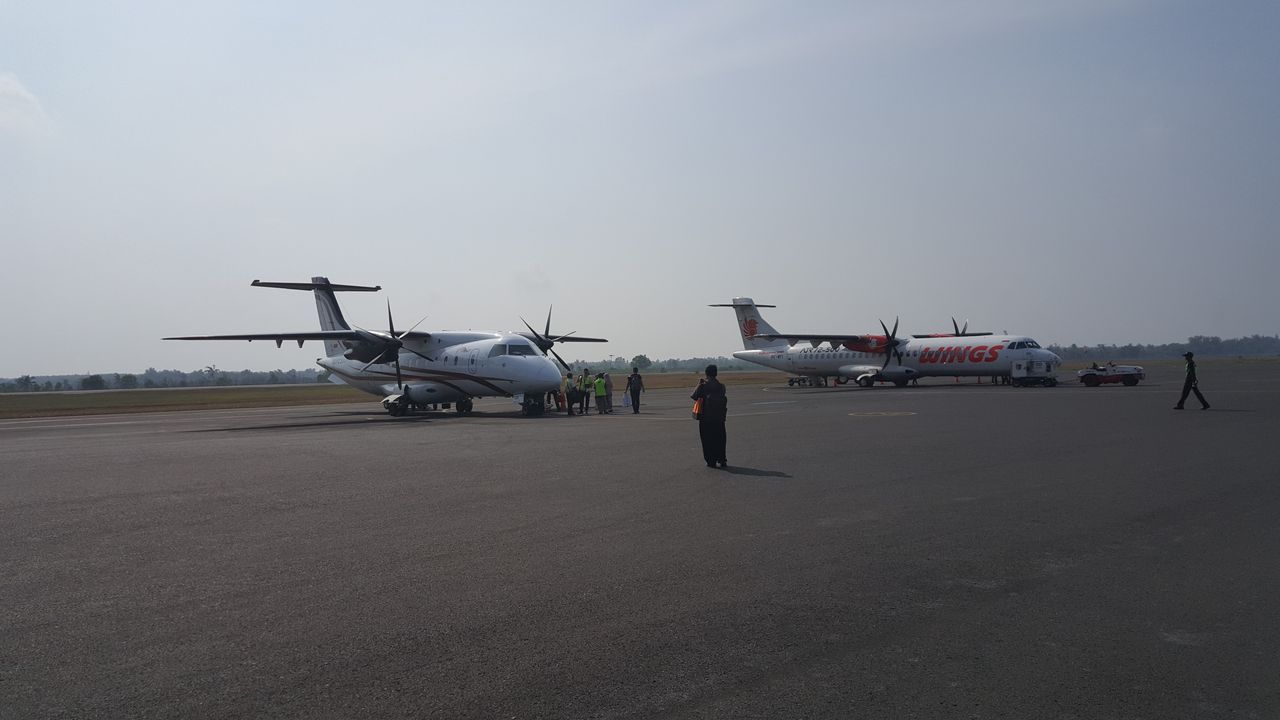
A view of the aircraft from the front.

We boarded through the front staircase.


On board
Flight: XN745
Plane: PK-TXN
ETD: 09.15
ETA: 10.05
Load factor: 94% Y (31/32)
Seat type: Standard economy class (window/aisle seat)
I previously commented that the AT7 cabin felt small, but this was on another level.

The sole flight attendant addressing passengers seated in the emergency exit row.

Seat pitch was quite acceptable for a small plane, and even felt bigger than the seat pitch on ID/OD's ATR72, although as the plane is close to 23 years old the it has already shown much wear.

Inside the seat pocket are the safety instruction and inflight magazine.


As the plane is on the smaller side, rather than pushing back the plane simply turned around. The flight attendant's face expression could be said as hilarious, especially as she was seated in front of all passengers.


The plane took off and it started climbing to its cruising altitude at 18.500 ft.


The flight attendant seen entering the cockpit, supposedly providing their meal. As seen, the seats at Dornier 328 are slightly raised above the corridor.
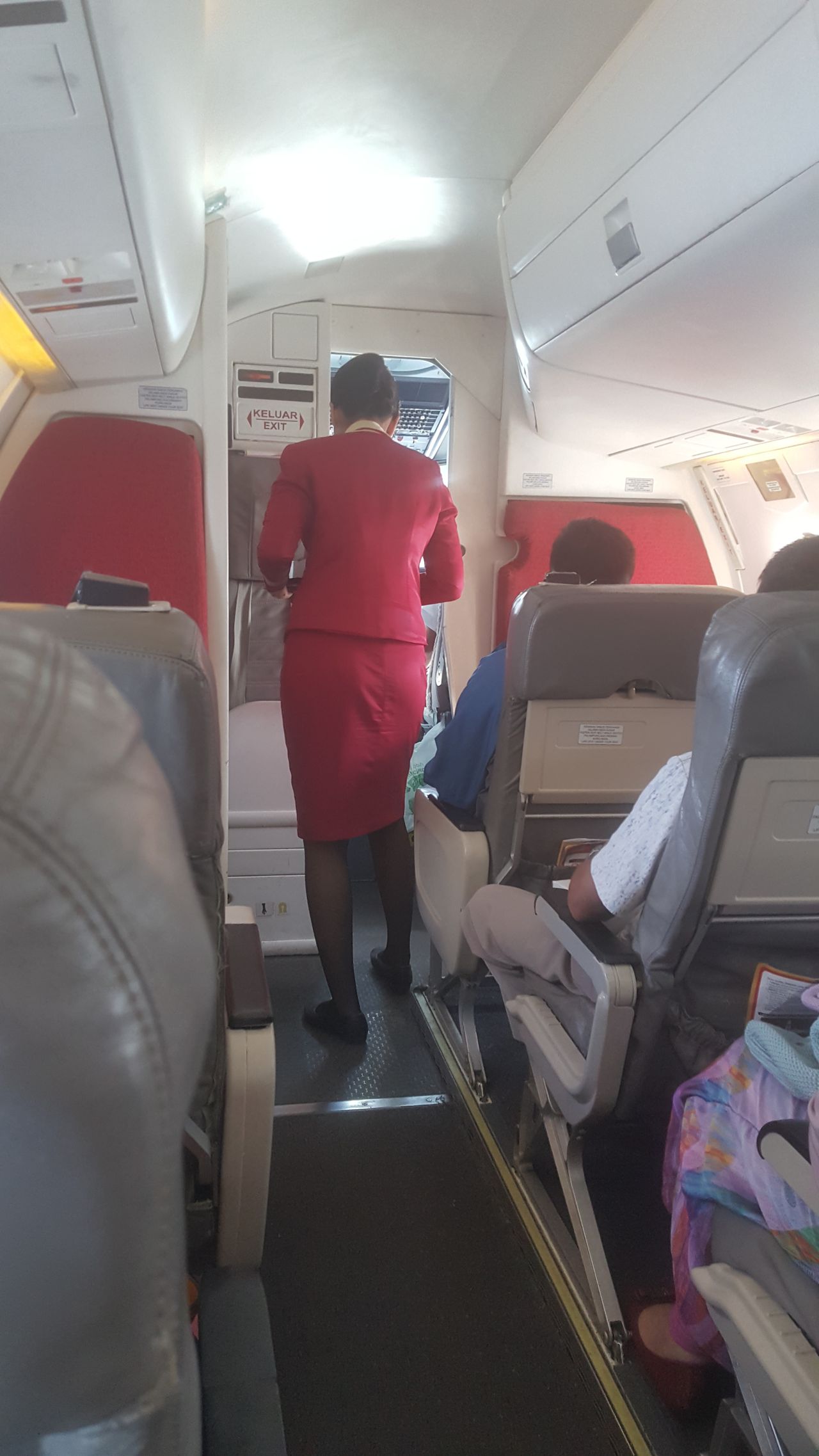
View as we were nearing the cruising altitude.

Snacks were brought by the flight attendant by hand in an unbranded box.

Meal was a very simple affair with the following items offered:
- Bread: Bread with raisin and some unknown sweets
- Drink: Aqua brand mineral water
The bread's filling looked somehow shady and not appealing, which left me with quite a bad impression.

Does the plane have a toilet? Yes, but they didn't even bother filling the blue toilet water either, which was surprising. The size of the toilet is also on the smaller side.

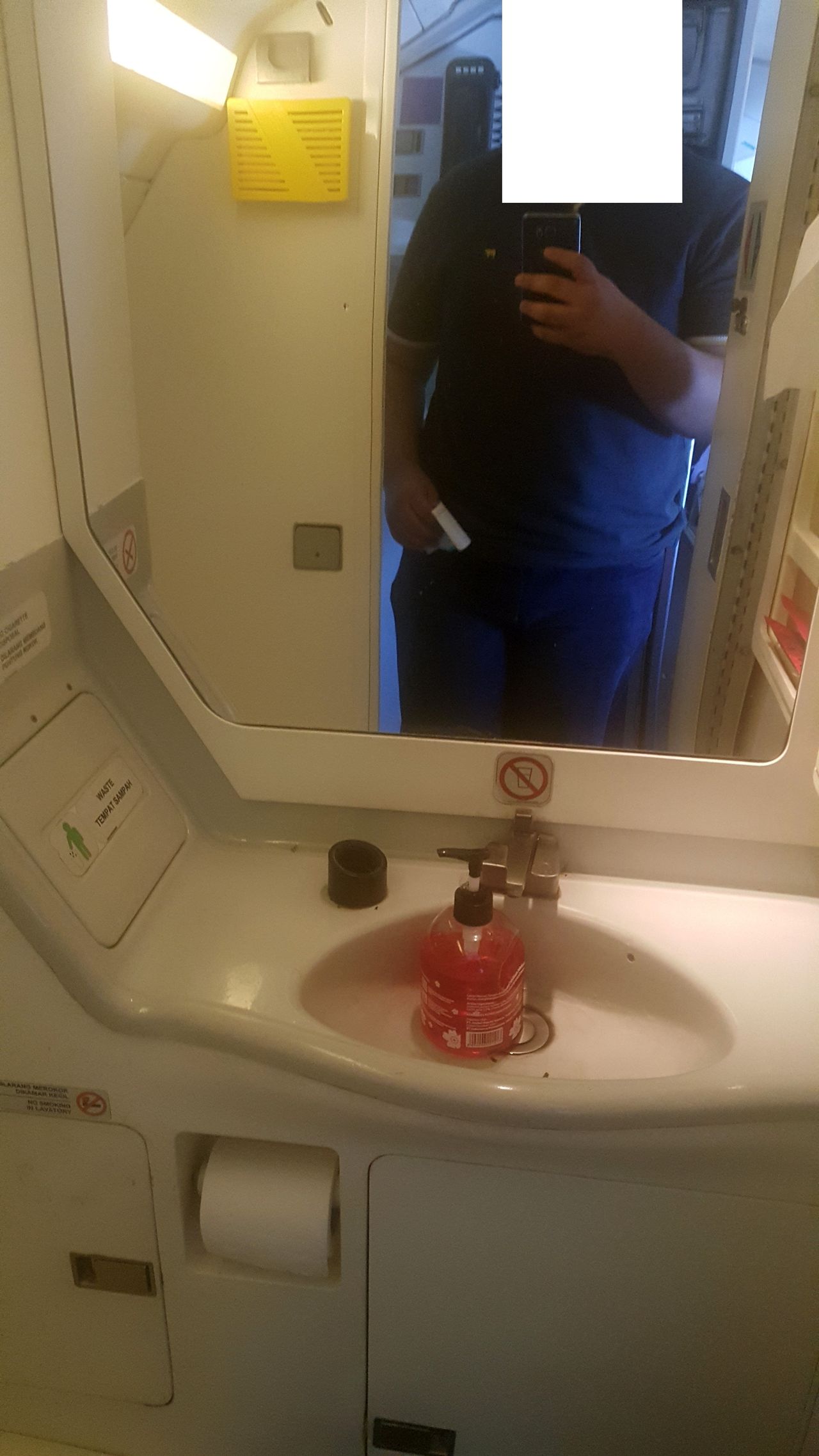
The plane also carry a trolley and even a mini-galley although someone figured it would be faster serving by hand for shorter flights like this.

The cabin seen from behind

Some views during the cruise


The plane started descending towards Palembang PLM.


The plane landed behind schedule at around 10.14.


View of the tarmac from the plane.

As the flight would continue to PKU, the flight attendant announced that all transit passengers are to remain in the plane, while everybody disembarked from the plane. When I saw nobody is continuing to PKU, I asked her if I could visit the cockpit for a moment, to which the captain allowed.
During the visit, the captain explained that the plane is different from others as it uses German technology (which for what it matters does not look that much different). He also explained that for short turnarounds like this he would usually run through the checklist and do a walkaround to check the plane briefly. For the plane itself, he noted that it is only flying around 10 hours daily and serviced every 60 hours, which explains the 6x weekly schedule.
A view of the cockpit and the captain and first officer.


One last photo of the Dornier 328, which somehow looks quite good.

JT's PK-LKP about to return to Surabaya SUB.

The airport from below feels almost the same as Surabaya SUB terminal 1, which also happen to be managed by Angkasa Pura.


Arrival at PLM and post-arrival trip
The walkway to arrival area looked quite simple.

Welcome to Palembang sign complete with a depiction of Ampera bridge.

The luggage claim area was quite crowded

As I had no checked baggage, I left the arrival area to find some public transportation.
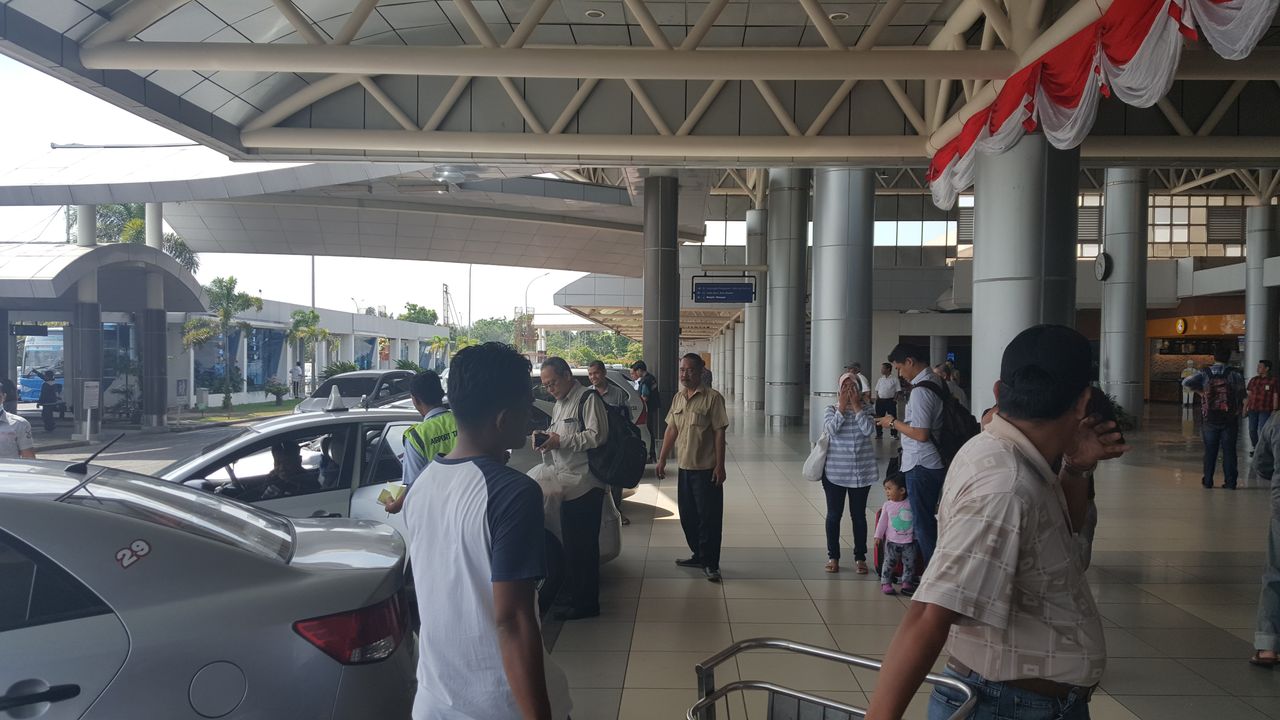
The design heavily resembles the one at Surabaya SUB terminal 1, which means the airport itself is also quite dated.

Trans Musi, Palembang's BRT system, offer bus services for only Rp5000 (US$.4) across most part of its network.

Bonus: Day trip at Palembang and Palembang - Bandar Lampung by train

The famous Ampera bridge

Some exhibits from the Sultan Mahmud Badaruddin II Museum near the bridge.


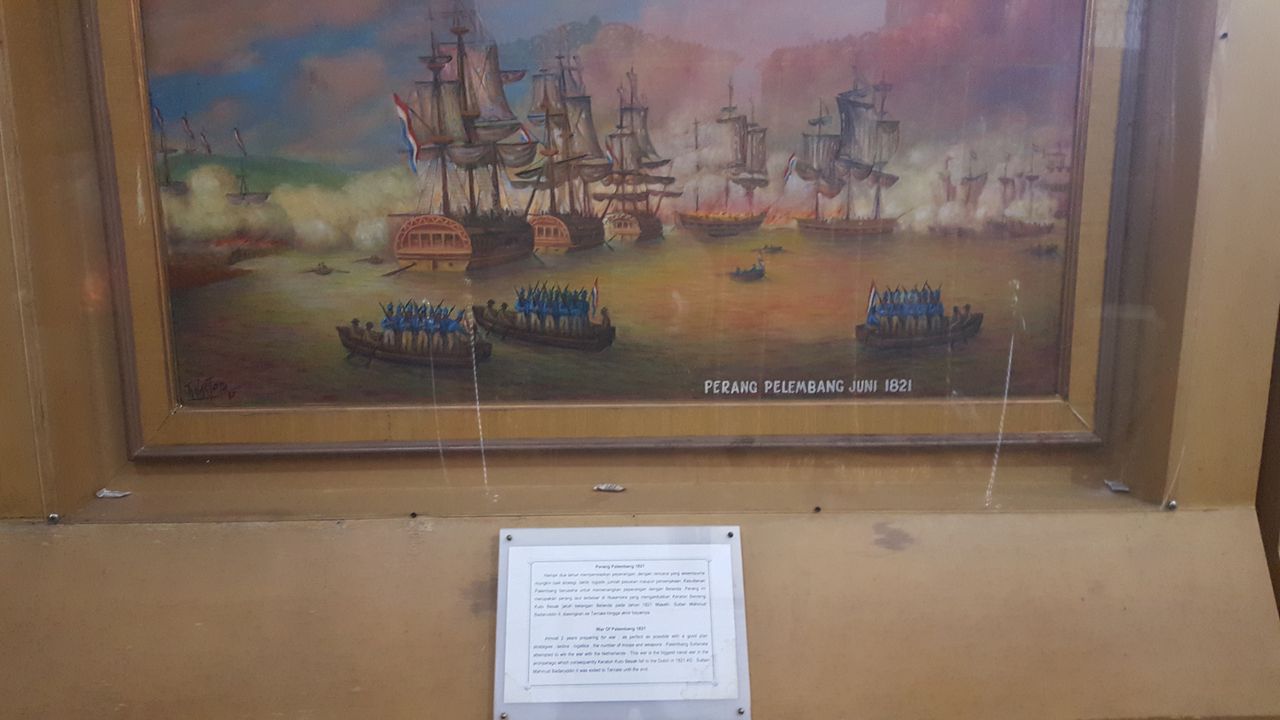




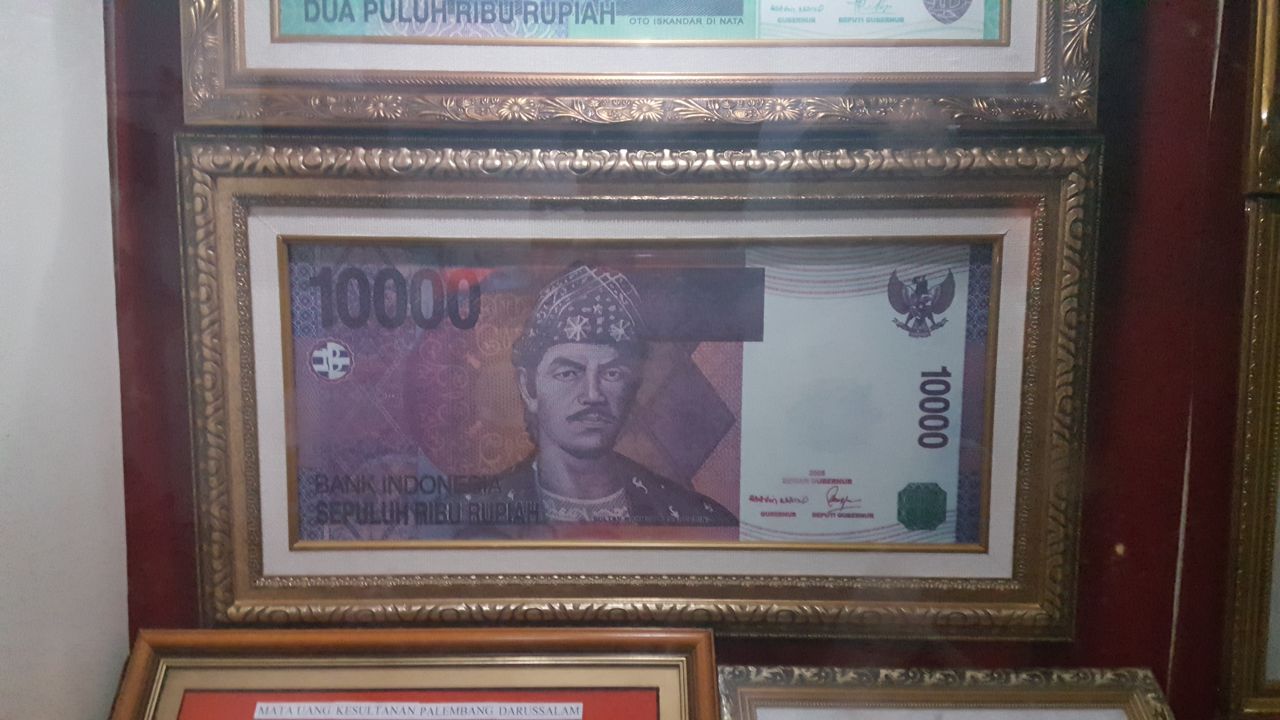

Palembang can be quite hot, so arguably th city is obsessed with iced drinks. At the photo is silken tofu with ice.


Mie celor is one of the lesser known specialty dishes of Palembang. I found the soup to be reminiscent of the sauce used in gado-gado (a type of Indonesian salad), so if you like one chances are you'll like the other.

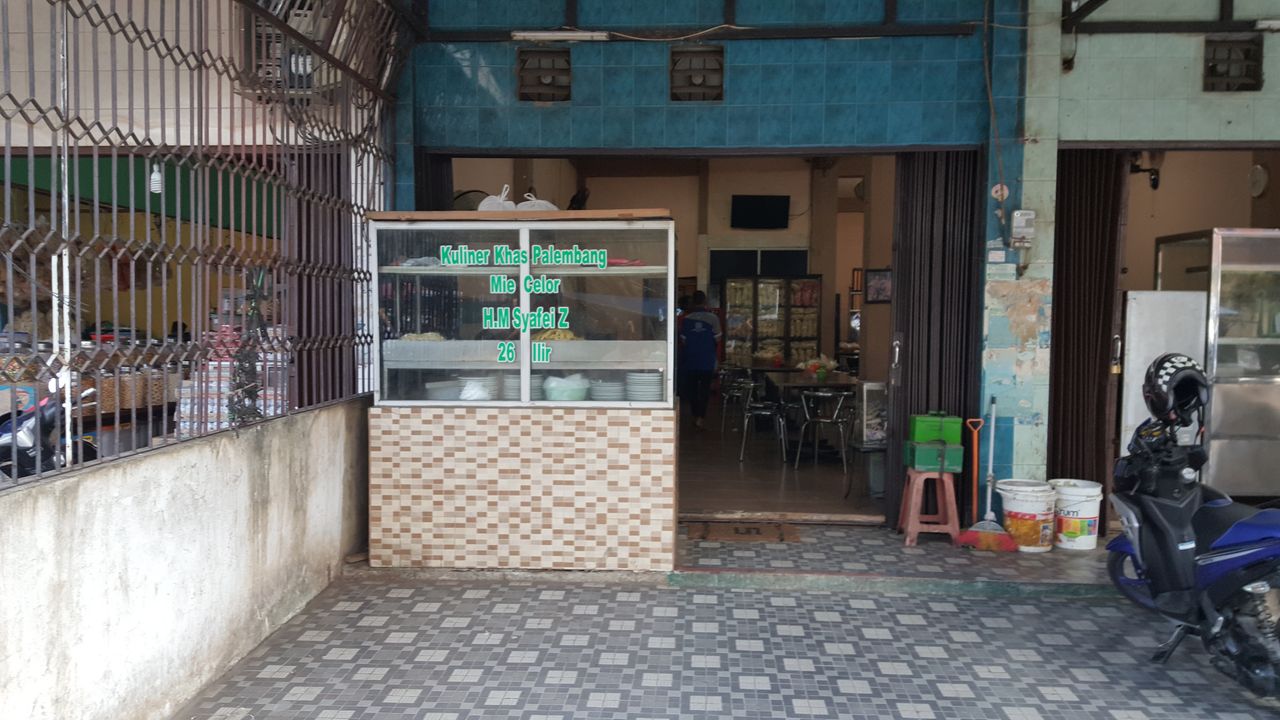
The afternoon rush hour traffic as people are crossing the quite large river

A view of the river

Pempek originates from Palembang so it's a must-eat as well. While the day before I didn't get the chance to eat it with my friends for one of my colleagues' farewell lunch back in Jakarta, I got the chance to eat it right at its home.

Kertapati Stn, the terminus for train services from Tanjungkarang (Bandar Lampung) and Lubuklinggau. There are very few terminus stations in Indonesia, and this is one of them.


I did my self check-in at the train station and afterwards received this boarding pass, a far cry from the old-styled ticket in hologram paper although significantly faster to print.

Typical at train stations in Indonesia, no security check was conducted, but merely identity check.

The waiting are and short walk to the platforms. Note that train services to the left would end at Tanjungkarang while train services to the right would end at Lubuklinggau.
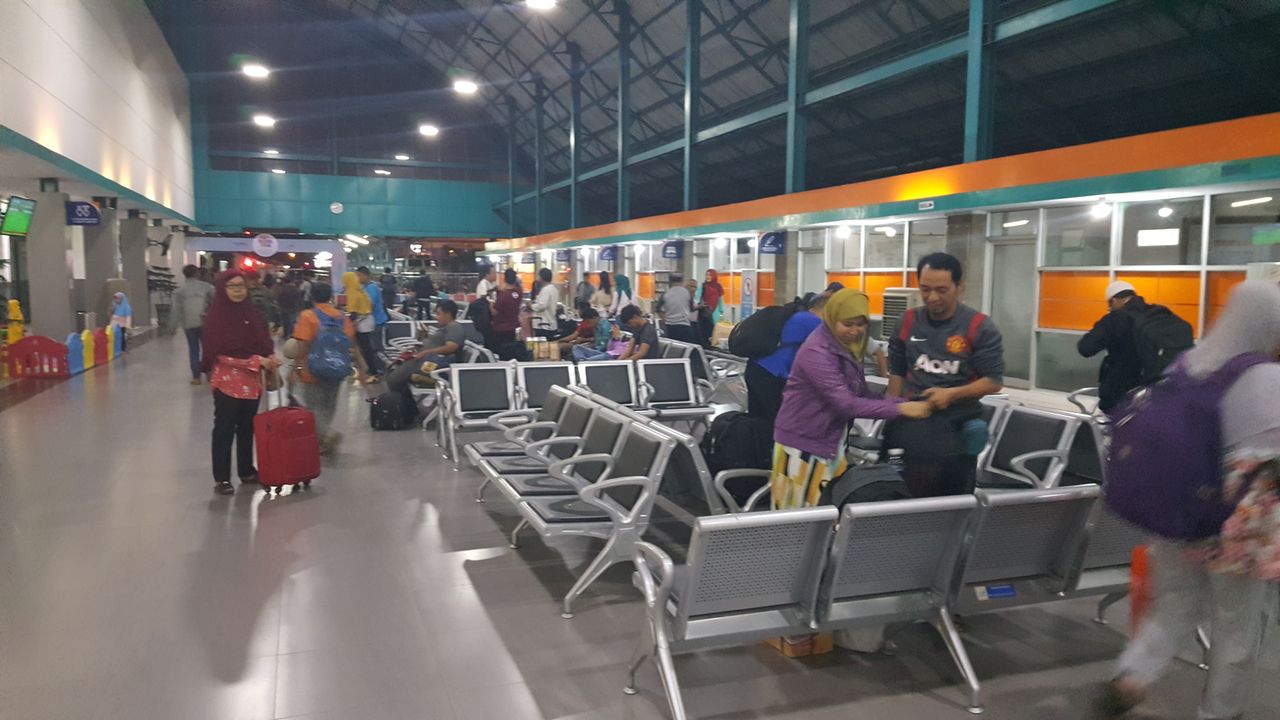
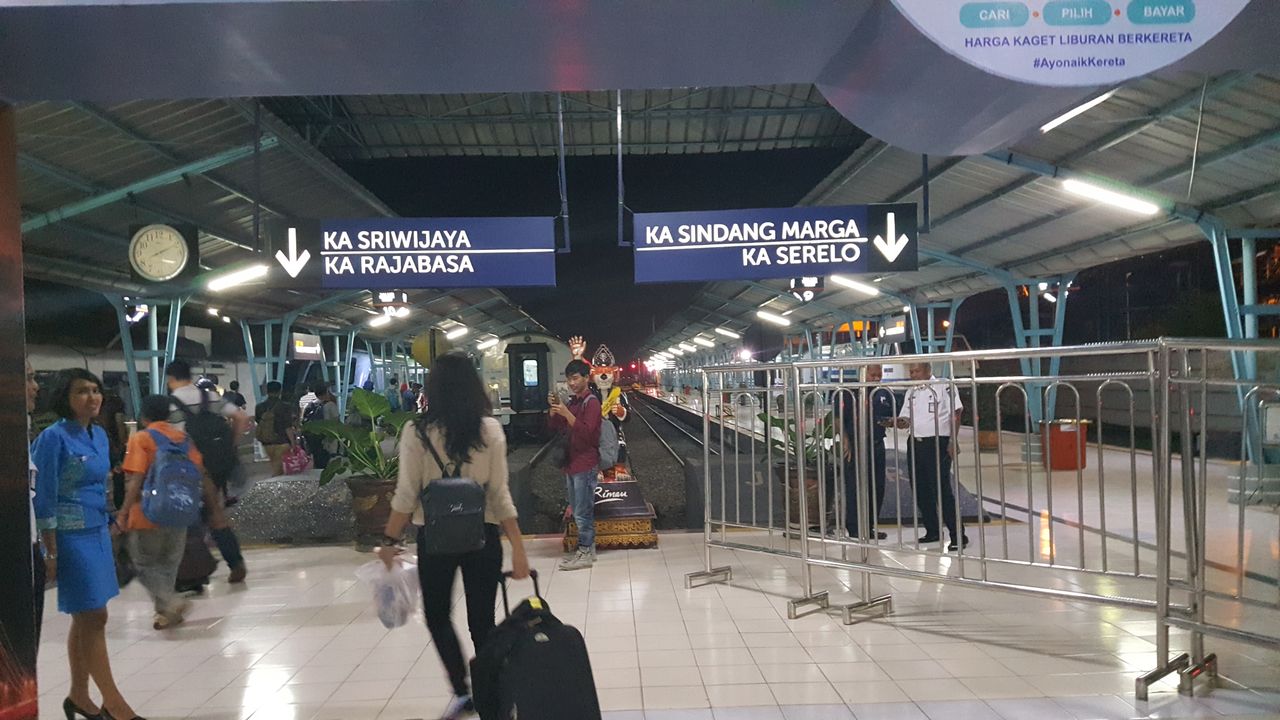
One of the executive class coaches of the train.

Executive class coaches in Indonesia consist of 50 or 52 seats per coach, while business class (not pictured) consist of 64 seats.

The seats feature footrest and legroom was fine, although they look rather dated.

Seats can be swiveled as well, but in the default configuration all executive class seats face the direction of travel

The network map of train services in southern Sumatera.

Safety card on a train - the first time I saw it.


A blanket was provided by the staff, while the pillow was already put on each seat.

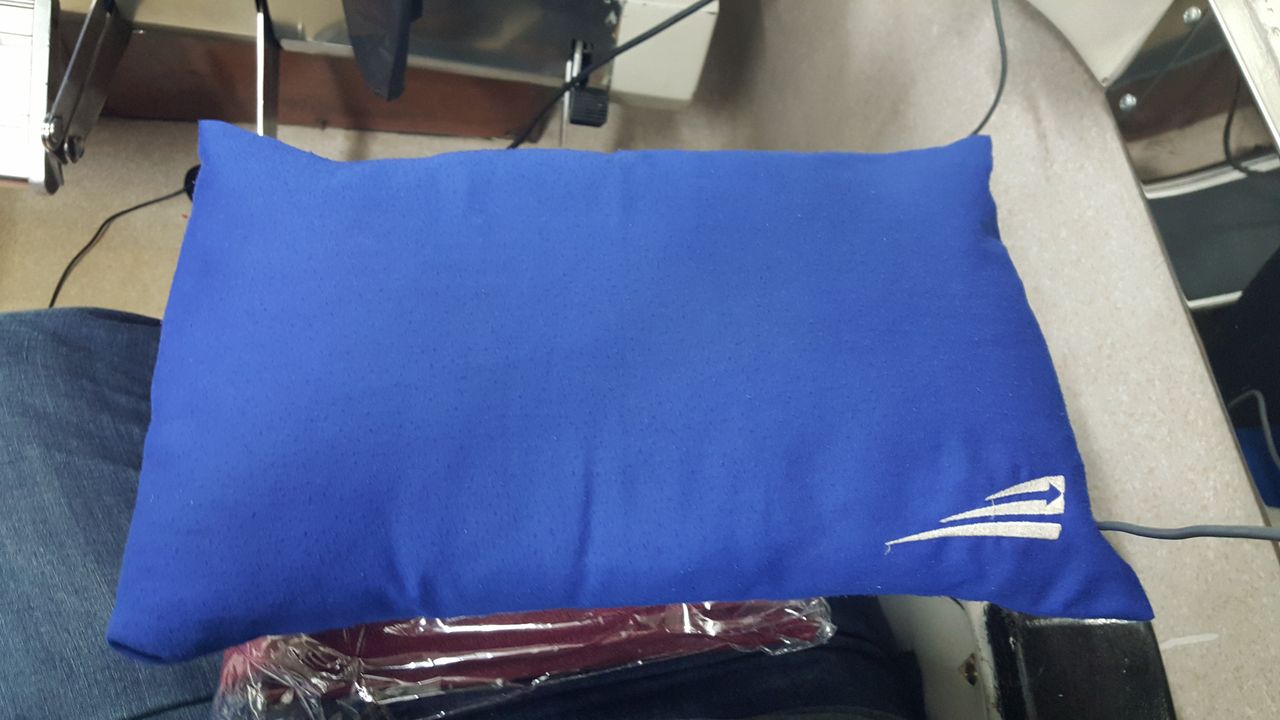
The coal train - in this rail network those trains are prioritized, causing the travel time to be extremely long.
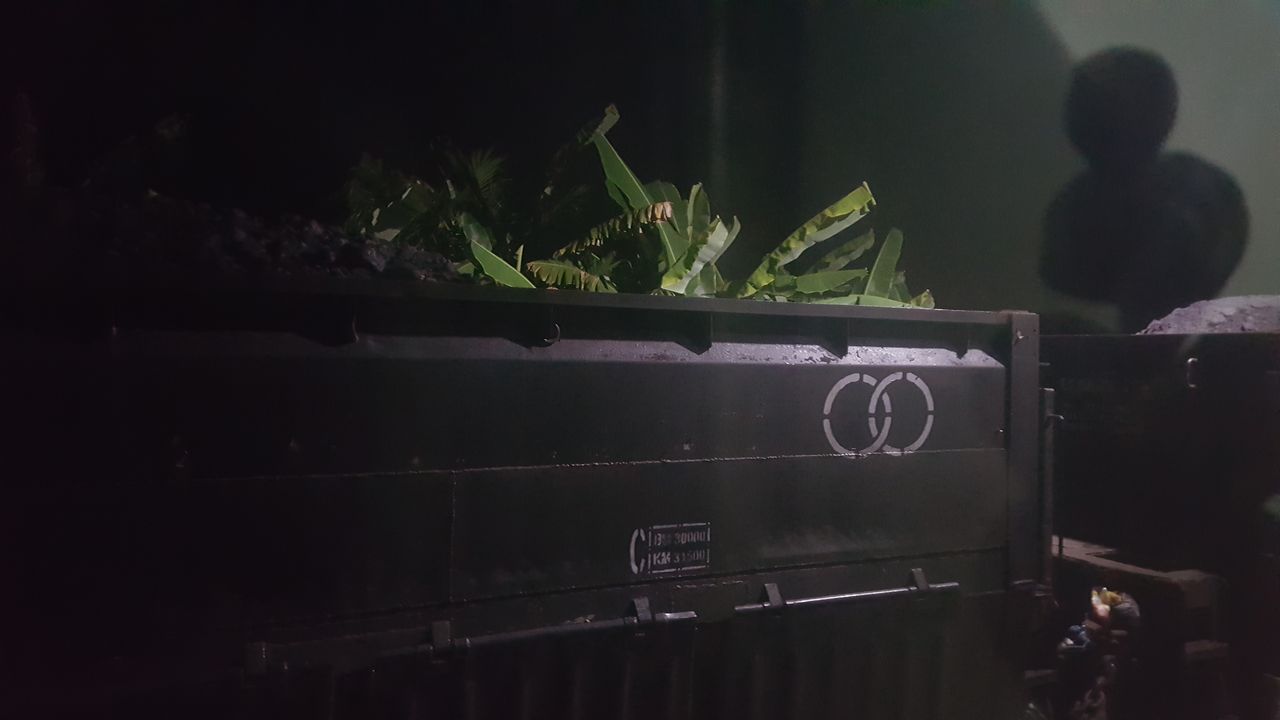
Supper of the night - ayam kremes (fried chicken with fine seasoned flour sprinkles), Rp25.000 (US$1.9). The portion was quite good, although the lack of proper plate like in the better old days didn't help.

Somewhere near Bandar Lampung

A view of Tanjungkarang Stn, the main train station of Bandar Lampung as well as the southern end of the rail network in southern Sumatera.


For the Bandar Lampung to Jakarta trip by ship, read here.







Thanks for this little gem of a report, you just can't beat that kind of exotism!
I also think that the little Dornier is quite alluring for a turboprop airliner. I don't have the exact figures but obvisouly this plane is getting rarer and rarer as you noted, there are only a few of them left in Europe, notably in Switzerland. The jet version has a lot of style, too.
Minimalist service which is expected on this kind of route (I guess). It's always a pleasure to have little cockpit tour before leaving the plane, that glass cockpit doesn't look old at all. The same cannot be said of the cabin with its angular PSU and bins. I do like the Dornier oval/elliptical-shaped windows though.
Nice pictures and interesting explanation about airports I've never heard of before.
Thanks again!
Thank you for visiting!
It is indeed a rare catch, especially with turboprop planes in Indonesia heavily dominated by ATR72 (currently used by Wings Air and Garuda Indonesia, but interestingly no Dash 8 here).
The plane already has a glass cockpit since it was made in 1990s, and interestingly enough both A320 and B737NG families are first introduced in 1990s as well. On the other hand, as there is almost no direct competition for the plane, the cabin looked to me as if they had not been refurbished for long.
While both airports are actually not that small (Palembang PLM is a mid-sized one while Bandar Lampung TKG is slightly smaller), I can tell that it's their first report here for both airports.
Even tho PK-TXN is 23 years old she's still looking pretty good from the exterior! Nice report for Xpressair and their Do-328!
The plane may be older than me, but not only the exterior didn't look old, the cockpit doesn't look that old either.
Thank you for reading!